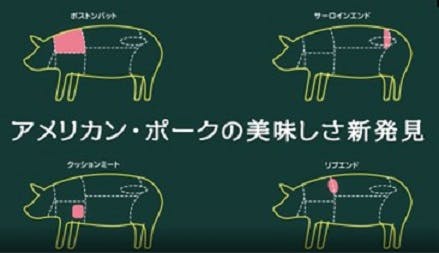Rising Costs Present Opportunities for Underutilized U.S. Pork Items
Global prices for all meat types continue rising, according to the FAO Food Price Index, a global barometer of prices for food commodities. While an environment of rising prices can potentially slow strong global demand for U.S. red meat, it also brings marketing opportunities as consumers and the trade look to reduce costs.
“Saving money is important for international consumers and cost-reduction has become essential for retail and foodservice sectors,” says USMEF President and CEO Dan Halstrom. “The trade is very receptive to new product ideas and USMEF has accelerated educational and promotional programs for cost-effective pork cuts and variety meats at the center of the plate.”
Halstrom points to the strong preference of U.S. consumers for middle meats, especially bacon, loins and ribs. On the other hand, pork production far exceeds U.S. demand for primal ends such as the picnic, butt, ham and leg, which rely heavily on export demand.
- In 2021, 54% of U.S. picnic production, 35% of the butt/shoulder primal and 46% of ham/leg production was exported.

USMEF collaborated with a popular Korean TV show host to promote healthy consumption through a simple pork recipe with U.S collar butt
The bulk of exports from these primals are destined for further processing, says Halstrom, but there is increasing interest from the trade in offering economically priced ingredient options to consumers for traditional dishes.
Funding from USDA’s Market Access Program and Agricultural Trade Program, the National Pork Board and soybean and corn checkoffs support this market development work.

Watch Video: In one of four USMEF videos about underutilized pork cuts, U.S. Boston butt is demonstrated as a versatile alternative in yakiniku dishes for restaurants and retailers
In Japan, USMEF implemented a strategic initiative to help the trade capitalize on the April 2022 decrease in the duty on Japan’s picnic/cushion meat imports. Leading up to and following the duty decrease, USMEF aggressively promoted U.S. picnics to the trade as a high-value alternative cut for yakiniku, Tonkatsu, pulled pork and ginger pork dishes.
USMEF also developed a series of videos to demonstrate the versatility of four underutilized U.S. pork cuts and their potential applications in popular Japanese dishes. The videos were shared with trade accounts and demonstrated fabrication and cooking ideas for cushion meat, Boston butt, loin rib-end and sirloin end.
In Mexico and Central America, USMEF utilizes mobile grill programs to conduct educational workshops about U.S. pork for distributors and their end-user customers. A primary goal of the workshops is to introduce and demonstrate how to cost-effectively utilize and promote alternative U.S. pork cuts and variety meats through grilling and alternative cooking methods for new and traditional Mexican dishes.
The emphasis on potential applications for underutilized U.S. pork items is a goal of every trade show, product seminar, culinary training and all educational activities that USMEF conducts. For example, Korean barbecue dishes are exploding in popularity in the Philippines. At a recent culinary training event for restaurants in Manila, USMEF provided a demonstration of alternative U.S. pork items that are excellent and economical for these dishes, including brisket bones, shoulders and jowls.
“High-value U.S. pork cuts and variety meats can have a significant place at the center of the plate in local dishes,” says Halstrom. “USMEF provides further support for these items by working to build demand through consumer communication programs in local markets. Through influencers, social media and promotional events, we are reaching more consumers than ever with new recipes and cooking ideas for underutilized U.S. pork items.”
